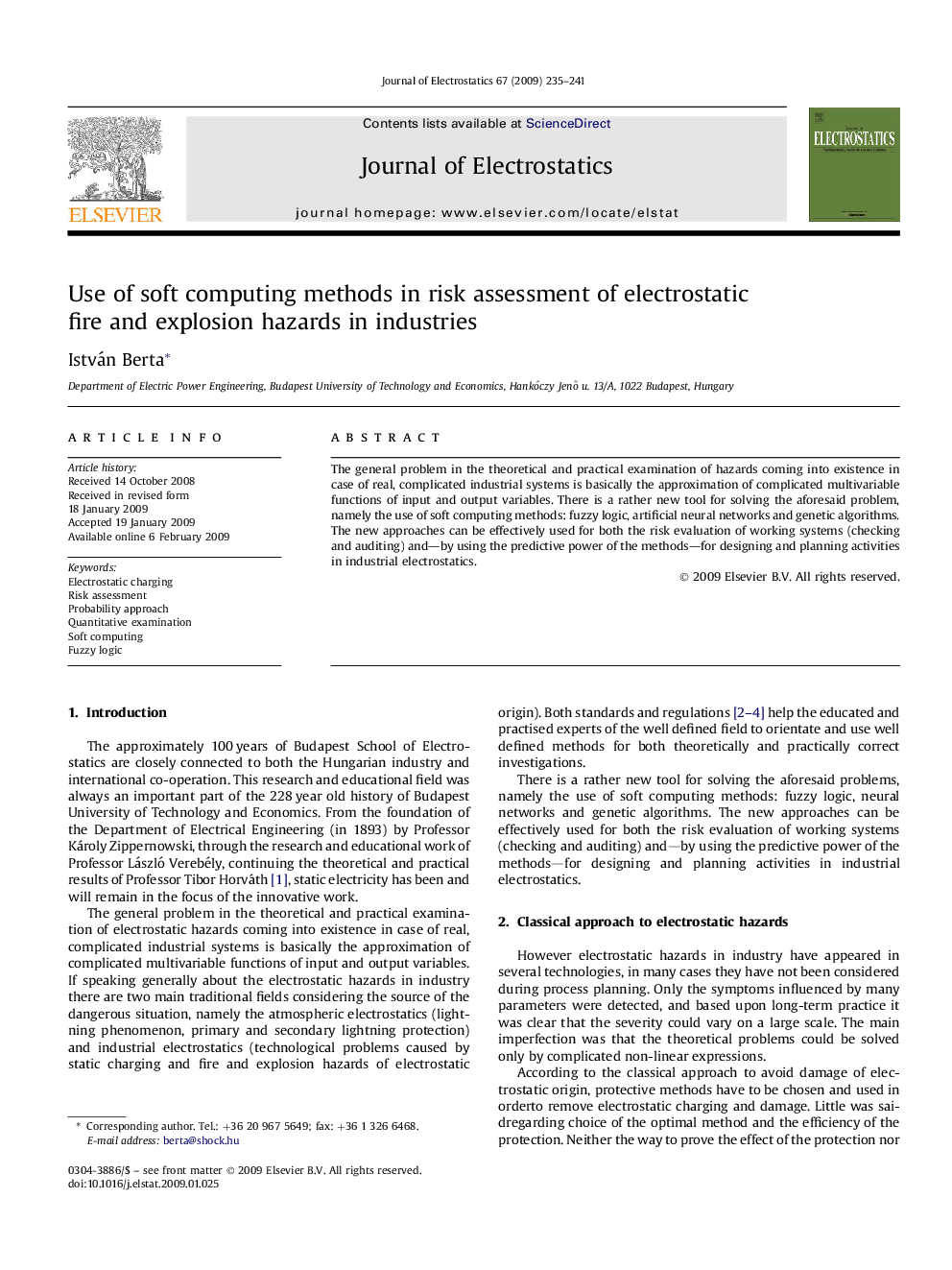| Article ID | Journal | Published Year | Pages | File Type |
|---|---|---|---|---|
| 724670 | Journal of Electrostatics | 2009 | 7 Pages |
Abstract
The general problem in the theoretical and practical examination of hazards coming into existence in case of real, complicated industrial systems is basically the approximation of complicated multivariable functions of input and output variables. There is a rather new tool for solving the aforesaid problem, namely the use of soft computing methods: fuzzy logic, artificial neural networks and genetic algorithms. The new approaches can be effectively used for both the risk evaluation of working systems (checking and auditing) and—by using the predictive power of the methods—for designing and planning activities in industrial electrostatics.
Related Topics
Physical Sciences and Engineering
Engineering
Electrical and Electronic Engineering
Authors
István Berta,
